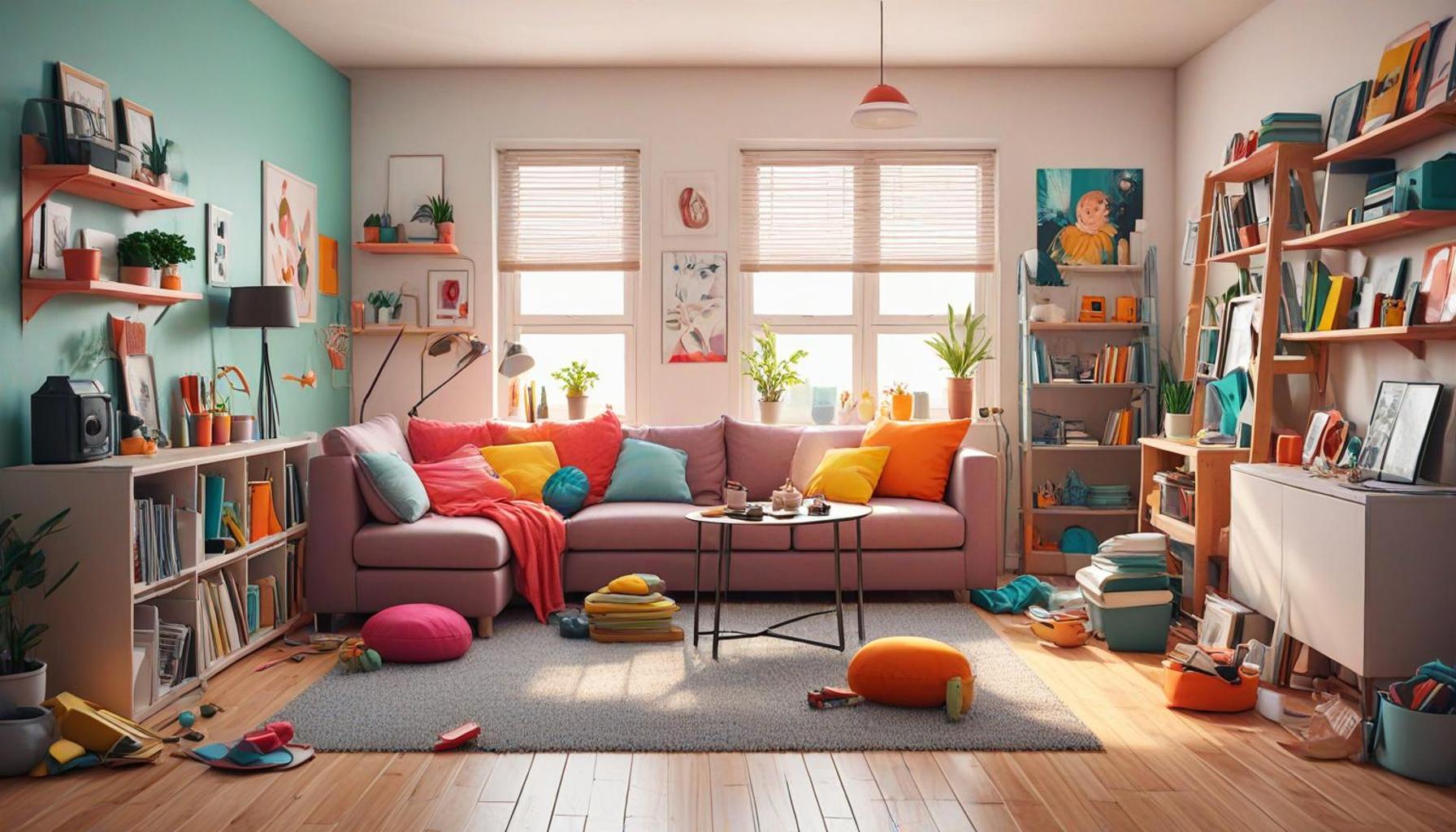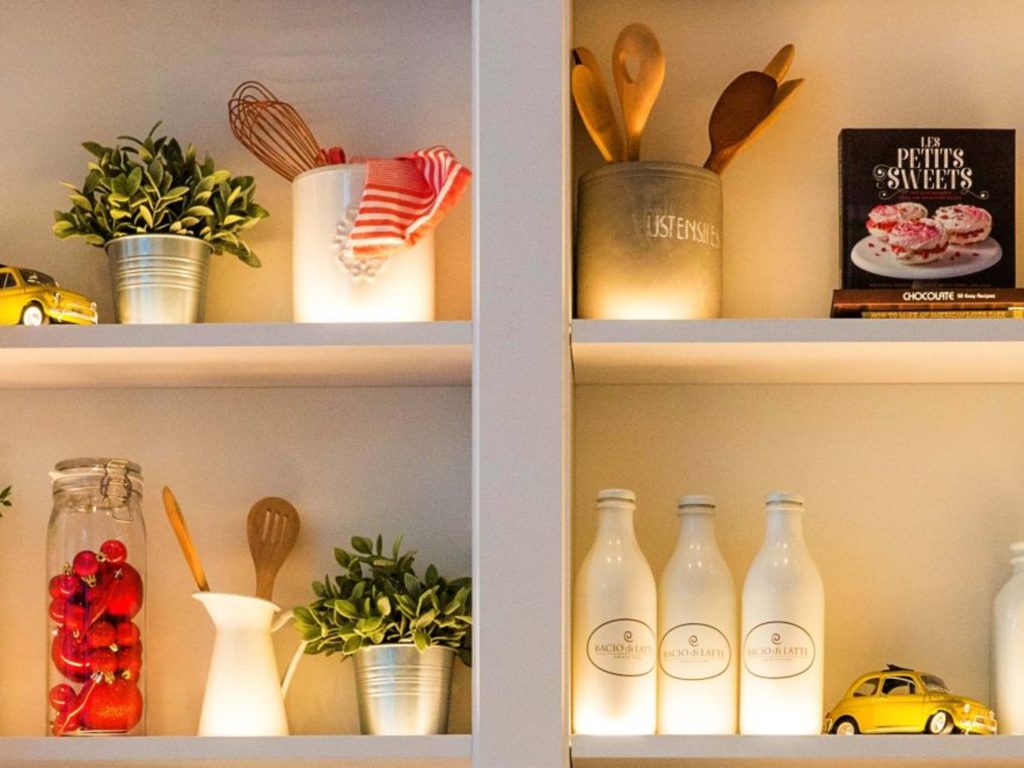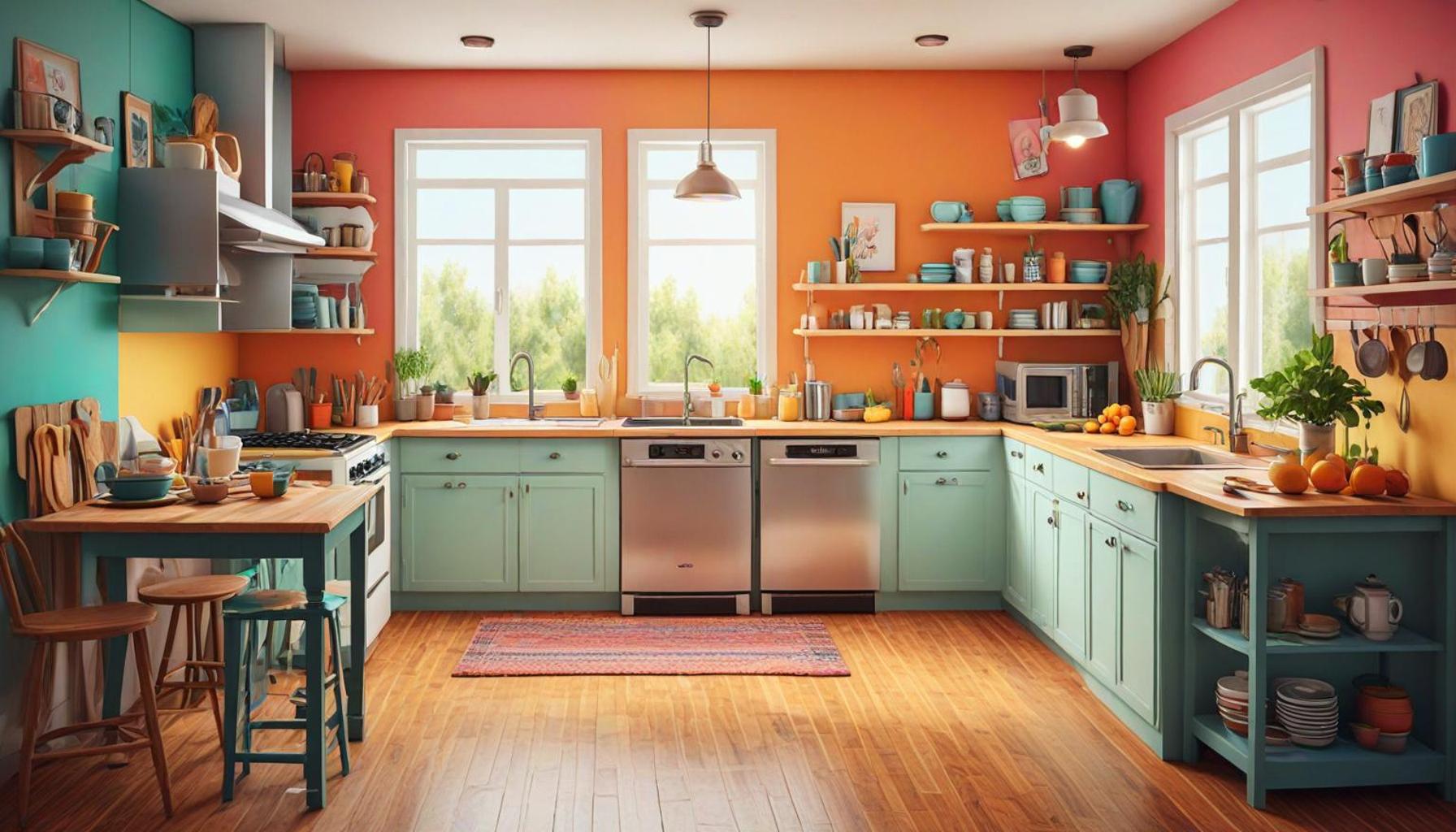Effective Home Decluttering Tips A Practical Minimalist Guide

Introduction
In an age where consumerism often overwhelms our living spaces, the significance of minimalism has surged in popularity. This philosophy not only promotes a simpler lifestyle but also emphasizes personal organization as a means to achieve mental clarity and peace. As we navigate through clutter, the need for effective strategies becomes paramount for transforming our homes into sanctuaries of tranquility.
Embracing minimalism isn’t solely about reducing physical items; it’s also about cultivating a mindset that values quality over quantity. By adopting minimalist practices, you can unlock numerous benefits, including:
- Decreased stress levels associated with clutter
- Enhanced focus on what truly matters
- Increased space for creativity and productivity
In this article, we will explore the Top 5 effective strategies for reducing disorder in your home. These practical tips will guide you toward a more minimalist lifestyle, allowing you to reclaim your space and enhance your quality of life.
DISCOVER MORE: Click here for practical meal planning tips
Top 5 Effective Strategies for Reducing Clutter at Home: A Practical Guide to Minimalism
In today’s fast-paced world, the concept of minimalism has gained significant traction, as it provides a refuge from the chaos of modern living. At its core, minimalism revolves around simplifying one’s living space, reducing excess belongings, and fostering a more organized, peaceful environment. Clutter not only occupies physical space but also creates mental stress and can significantly affect productivity and well-being. If you find yourself overwhelmed by clutter, it is time to embrace minimalism. In this article, we explore the top five effective strategies to help you reduce clutter and establish a harmonious home environment.

5. The One-Year Rule
The One-Year Rule is a straightforward yet profoundly impactful strategy for tackling clutter. It operates on a simple premise: if you haven’t used or worn an item in over a year, it might be time to let it go. This strategy helps you confront the myriad of items that linger in the corners of your home, often without purpose. To implement this rule effectively:
- Scan your home room by room, evaluating each item.
- Ask yourself critical questions: Have I used this in the last year? Does this item hold significant emotional value? Would I spend money to replace it if it were lost?
- If the answer is ‘no’ to all the questions, consider parting with the item.
This exercise not only creates physical space, often described as breathing room, but also clears mental clutter. Individuals frequently report feeling a sense of relief and reclaiming control over their living environments. Furthermore, the One-Year Rule establishes a more thoughtful approach to future purchases, encouraging you to consider the utility and necessity of items before bringing them into your space.
4. The 30-Day Declutter Challenge
For those who thrive on challenges, the 30-Day Declutter Challenge offers a structured approach to systematically reduce clutter. By increasing the number of items removed each day, this method builds momentum and instills a sense of accomplishment. Here’s how you can tackle it:
- Begin by setting a calendar reminder daily to keep yourself accountable.
- Identify key areas in your home that require attention, such as your wardrobe, kitchen, or garage.
- Document your progress; consider taking before and after photos to visually track your decluttering journey.
As the month progresses, participants often find themselves increasingly adept at making decisions about what items hold genuine value. By the end of the 30 days, not only will you notice a physical transformation in your living spaces, but also a psychological one, fostering a more mindful mindset about consumption and ownership.
3. Adopt the “One In, One Out” Habit
The One In, One Out habit promotes a sustainable approach to minimalism by establishing a balance between the acquisition and letting go of items. This principle is particularly effective for preventing clutter from accumulating over time. To integrate this habit into your lifestyle:
- Exercise vigilance during shopping. Before bringing new items into your home, assess what you currently own and determine if it fulfills the same purpose.
- Prioritize quality over quantity. Opt for essentials that add value and durability instead of redundant items.
- Don’t neglect digital clutter; unsubscribe from superfluous promotional emails which can overwhelm your digital space.
This habit not only helps manage tangible goods but also encourages an ongoing assessment of possessions, curating a living space that resonates with your true needs and style. The practice of deliberate choice enhances gratitude and satisfaction towards the items you truly cherish.
2. Create Designated Spaces
Creating designated spaces for your belongings is essential for maintaining a tidy and organized environment. When every item has its own home, it significantly reduces the chances of clutter piling up. To establish designated spaces effectively:
- Pinpoint clutter-prone areas in your home.
- Assign specific spaces for particular categories such as a mail station for correspondence or a shoe rack for footwear.
- Involve family members; ensure everyone understands and utilizes the system consistently.
Not only does this strategy act as a guard against future clutter, but it also provides a clear and systematic approach for you and your household to manage belongings. By reducing the instances of misplaced items, you achieve a more serene and visually appealing environment, conducive to relaxation and productivity.
1. The Minimalist Lifestyle Shift
The most profound and holistic approach to reducing clutter at home is embracing a minimalist lifestyle. This involves a complete shift in mindset towards valuing experiences over possessions and focusing on what truly brings joy and satisfaction. To fully embrace minimalism, consider the following steps:
- Reflect on Priorities: Spend time identifying what genuinely makes you happy and allocate resources toward enhancing those aspects of your life.
- Embrace Experiences: Invest more in activities, travel, and relationships rather than physical items that offer momentary pleasure.
- Simplify Routines: Reduce distractions by decluttering schedules and commitments that do not serve your core values or personal growth.
By adopting a minimalist lifestyle, you cultivate an intentional life characterized by clarity, focus, and fulfillment. This shift often results in reduced stress levels and an increased ability to concentrate on life’s meaningful aspects. As numerous minimalists express, the less you own, the more liberated you feel, creating a ripple effect that enhances overall well-being and contentment.
In sum, embracing minimalism through strategic decluttering not only transforms living spaces but also promotes a state of mental clarity and peace. By implementing these five strategies, you can embark on a journey toward a more fulfilled, balanced, and harmonious life.
To effectively reduce clutter in your home and adopt a more minimalist lifestyle, various strategies can be employed. Implementing just a few of these practices can bring significant changes to your living environment, leading to both physical and mental well-being. Here are additional methods that promote a clutter-free home:1. **Digital Declutter:** In today’s tech-savvy world, clutter isn’t confined to physical items. The overabundance of digital files, emails, and apps can contribute to a sense of chaos. Start by organizing files into folders, deleting duplicates, and unsubscribing from unnecessary emails. This digital decluttering process can streamline your online experience, yielding clearer focus and productivity.2. **Establish a Daily Routine:** Consistency is crucial in the minimalist approach. By creating and adhering to a daily routine, you can incorporate decluttering tasks into your schedule. Allocate a few minutes each day to tackle one specific area of your home. This steady approach will make it manageable and less overwhelming.3. **The One-In-One-Out Rule:** To maintain a clutter-free space moving forward, adopt the principle of one-in-one-out. For every new item brought into your home, commit to removing an existing one. This steady flow prevents accumulation and allows you to thoughtfully consider each purchase, ensuring it adds value to your life.4. **Mindful Purchases:** Before making a purchase, evaluate its necessity and the joy it brings you. Ask yourself if the item aligns with your minimalist goals and whether it serves a practical purpose. This mindful approach can significantly reduce impulse buying and unnecessary acquisitions that contribute to clutter.5. **Storage Solutions:** Invest in functional storage solutions that enhance organization without overwhelming your space. Utilize multifunctional furniture or attractive bins and baskets that complement your home’s aesthetic. These methods can help in storing items discreetly while still keeping them accessible when needed.6. **Regular Review Sessions:** Make it a habit to conduct regular reviews of your belongings. Designate a monthly or seasonal time to assess what you own and determine if each item still serves a purpose or brings joy. This ongoing process fosters intentionality in your possessions and supports a minimalist practice.7. **Emotional Attachment Considerations:** People often hold on to items due to emotional connections. Reflect on whether these items truly contribute to your happiness or are simply kept out of obligation. Recognizing the difference can help alleviate the burden of keeping items that no longer serve you.8. **Community Donations:** Letting go of unused or unneeded items can be cathartic, especially when you consider the impact it can have on others. Seek out local charities or organizations where you can donate goods. This practice not only clears space in your home but also provides an opportunity to give back to your community.With these strategies in mind, transitioning to a minimalist lifestyle becomes an attainable goal. It encourages a deeper consideration of what we keep in our homes, promoting not only tidiness but peace of mind. By taking actionable steps, anyone can start their journey towards a less cluttered and more meaningful living environment.
DISCOVER MORE: Click here to learn how to keep your space clutter-free
Frequently Asked Questions about Minimalism and Home Decluttering
What is the first step in starting a minimalist lifestyle at home?
The journey towards minimalism can often feel overwhelming, but the key is to start small. Begin with one room or area of your house. Many experts suggest the bedroom or kitchen as a starting point, as these are spaces where you spend significant time. The primary goal is to identify items that are necessary and those that are not. You’ll often hear the advice, “If it doesn’t bring you joy or serve a meaningful purpose, let it go.” Remember, the transformation to a minimalist lifestyle is a process that requires patience and persistence.
How can I maintain a clutter-free home once I’ve decluttered?
Maintaining a decluttered home involves forming new habits. Implementing a “one in, one out” policy can help manage new items coming into your home. This means that for every new item you acquire, one should be removed. Further, scheduling regular reviews—perhaps, monthly or seasonally—of your possessions will keep clutter at bay. It’s also beneficial to have designated places for everything, reducing the chances of disarray. Consistency and mindfulness are the cornerstones of sustaining a minimalist environment.
Is minimalism practical for families with children?
Embracing minimalism with children is not only practical but can be enriching for the entire family. Encouraging children to partake in the minimalist lifestyle can teach them important values about organization, gratitude, and the importance of experiences over possessions. Start with involving them in the decluttering process by letting them decide on toys and clothes they no longer use or need. It is crucial to introduce minimalism as a fun and rewarding challenge rather than a constraint. By focusing on the quality of family time and activities, you promote a household culture that values experiences over material items.
What are the benefits of adopting a minimalist lifestyle beyond reducing physical clutter?
Minimalism offers a plethora of advantages beyond just physical decluttering. One significant benefit is the reduction of mental stress; a simplified environment often leads to a clearer mind, allowing for better focus and a sense of calm. Financial savings is another upside, as the philosophy promotes mindful purchasing habits. Moreover, minimalism encourages a sustainability mindset, as it often involves consuming less and valuing what you have. Research consistently shows that individuals living minimalist lifestyles report higher levels of happiness and satisfaction. This lifestyle can align with broader life goals, providing more time and resources for personal growth and meaningful activities.
DISCOVER MORE: Click here to simplify your social life
Conclusion: Embracing Minimalism for a More Organized Life
In our pursuit to reduce household clutter through effective minimalism strategies, several key insights have emerged. At the heart of this practical guide lies the understanding that minimalism is not merely about decluttering physical spaces, but also about creating a mental and emotional landscape that’s free from the chaos of over-consumption. By focusing on essential items that truly enhance our lives, we open doors to a host of benefits including increased clarity, reduced stress, and enhanced productivity.
Adopting a minimalist mindset starts with assessing your personal needs and priorities. It’s about making deliberate choices concerning the items you choose to keep and letting go of those that no longer serve a purpose. This guide highlighted the significance of establishing systems that prevent the accumulation of unnecessary objects and encourage sustainable habits. Such systems ensure a perpetual cycle of simplicity and order, maintaining a clutter-free environment long-term.
Moreover, understanding the correlation between physical disorder and mental clutter is crucial. A tidy home contributes significantly to a balanced mental state, fostering peace and creativity. As the article detailed, the practice of minimalism extends beyond tidy shelves—it encompasses an organized lifestyle, where time is spent enjoying life rather than managing possessions.
With minimalism’s growing influence, now is an opportune moment to delve deeper into how it can transform not just our homes, but our lives. It’s a voyage towards essentialism and efficiency. As intriguing as these strategies are, exploring minimalism further can unveil additional facets of its potential, offering yet more innovative ways to enhance our personal and mental organization. Ultimately, embracing minimalism is a powerful step towards reclaiming our spaces and our lives.



